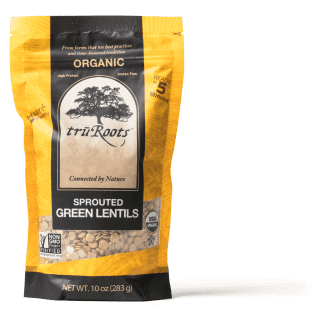Lentils are among the most versatile foods in our pantry. We use them for soups and stews, in salads and rice pilaf, and in classic pairings with proteins such as salmon, pork chops, and sausages. Although we like tiny, firm French lentilles du Puy and vibrant, tender red lentils, our recipes call for them only on occasion. More often we reach for brown or green lentils, which we’ve found are similar enough in flavor and texture to be used interchangeably in recipes. We like that these lentils are inexpensive and easy to find and tend to hold their shape when cooked. But which ones are best? We purchased five kinds of lentils labeled as brown, green, or simply “lentils,” priced from about $1.50 to about $6.00 per package, and sampled them in three blind tastings: plain, in a hearty vegetable soup, and tossed with vinaigrette in a simple salad.
Flavor Differences Were Minimal
When we cooked the lentils plain on the stovetop, their flavors were mild but still pleasant. But when we added salt and mixed them with other ingredients in soup and salad, their earthy and nutty flavors really came through. Tasters said that the flavors reminded them of the mild sweetness of green peas or beans. Only one product stood out slightly from the rest: It was sprouted, or germinated, which the company says partially breaks down the lentils’ protective coating so that they cook more quickly and have more nutritional benefits. In addition to tasting earthy and sweet, the sprouted lentils had a mild mushroomy and sesame-like flavor. It surprised us, but we liked it.

For A Firm Texture, Use A Gentle Cooking Method
Although the lentils tasted more or less the same, their textures varied dramatically. When we followed the instructions on the lentils’ packaging—boiling or simmering them on the stovetop until tender and then draining them—several became disappointingly soft and mushy. The sprouted lentils cooked quickly, but they also split open and looked messy. Two other products also became very soggy. Even the high scorers weren’t as firm as we wanted. We also noticed inconsistencies within individual samples: Some lentils were soft, while others were still almost crunchy.
All the lentils were better when we used the cooking instructions in our recipes. Though the soup recipe also called for simmering the lentils on the stovetop, the lentils’ textural flaws weren’t as readily apparent when mixed with the escarole and tomatoes. The texture of the lentils improved in the salad tasting because the recipe calls for two test kitchen tricks: soaking the uncooked lentils in a saltwater solution to tenderize their skins and prevent blow-outs as they cook and cooking the lentils in the gentle heat of the oven instead of simmering them on the stovetop. Even so, not all the lentils were perfect. The sprouted lentils still tended to split apart. The seed coating also slipped off some of the other lentils, similar to the way skins slide off chickpeas, creating a mix of textures that distracted our tasters from the lentils themselves. Our favorite lentils were perfectly intact and firm without being crunchy and had tender, creamy interiors.
The Best Lentils: Eden Organic Green Lentils
One big takeaway from our tasting was that lentils should be cooked gently and in seasoned water or broth. This helps keep them from bursting or becoming mushy and gives them a nutty, sweet, earthy flavor. But for the very best texture, seek out our winner, Eden Organic Green Lentils. Their firm yet creamy texture was just what we wanted, and we loved that these “attractive,” “caviar-like” lentils kept their shape in soup and salad. Whether you’re cooking a quick weeknight side dish or putting together an elegant entrée for a party, these lentils are sure to impress.
- Clean, earthy, and slightly nutty flavor
- Firm, uniform texture throughout with creamy interiors
- Keep their shape and don’t lose their skins as they cook
- Taste plain, cooked on the stovetop according to package directions
- Taste in Lentil and Escarole Soup
- Taste in a simple lentil salad, which calls for both brining the lentils and cooking them in the oven








